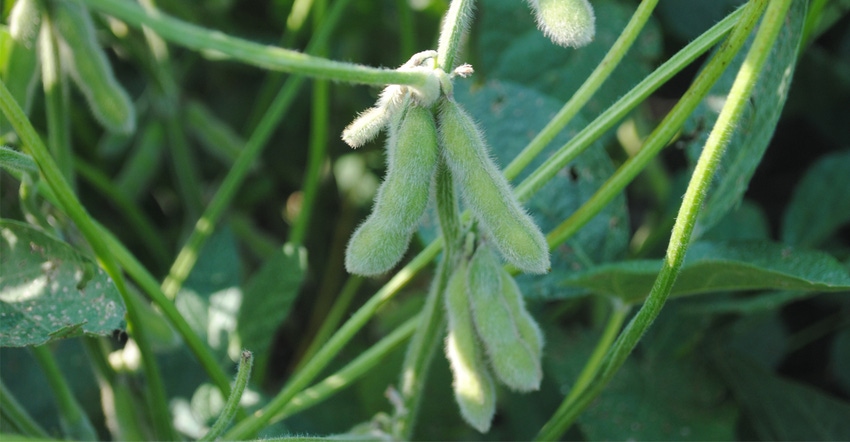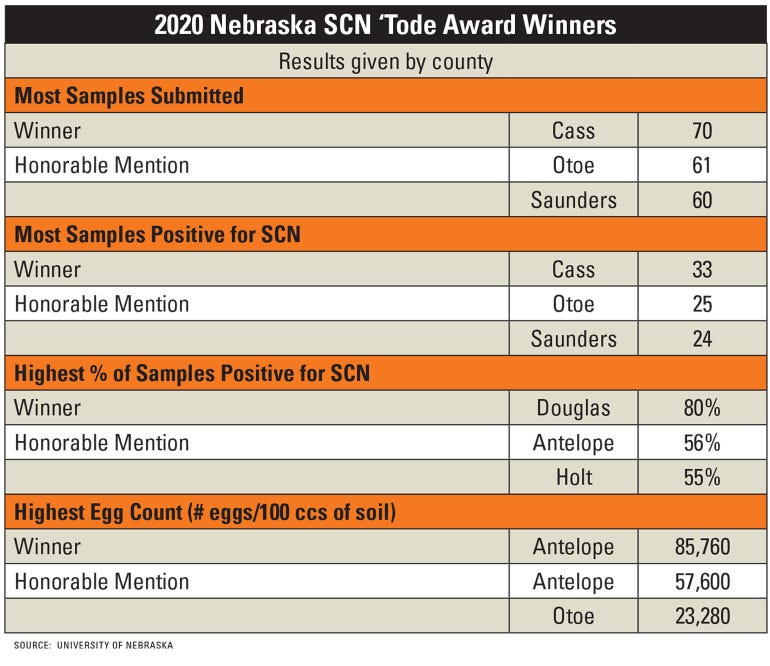March 29, 2021

For the past 15 years, the Nebraska Soybean Board has funded a free soybean cyst nematode sampling program for Nebraska farmers — which is normally a $25-per-sample expense. Since 2005, the University of Nebraska Plant and Pest Diagnostic Clinic has processed over 11,000 samples from across the state and confirmed SCN in an additional 32 Nebraska counties. Almost one-third of all samples have been positive for SCN.
In 2020, the clinic processed 459 soil samples, and 148 (32.2%) were positive for SCN. These soil samples represented 37 different counties, primarily in the eastern half of the state. Fortunately, most of the positive samples had low populations, with only 14 (3% of all samples) having moderate to high populations (more than 4,000 eggs per 100 cubic centimeters of soil).
With the help of the Nebraska Soybean Board and the SCN sampling program, we have confirmed the nematode in 59 Nebraska counties that are responsible for more than 93% of soybeans grown in Nebraska. Last year, SCN was estimated to cause yield losses of over $40 million for Nebraska farmers.

In keeping with a tradition begun by John Wilson, a former Nebraska Extension educator in Burt County, the SCN ’Tode Awards have been announced for 2020 (’tode is short for nematode). This dubious honor goes to the counties in four SCN sampling categories, with the most samples submitted and the most samples positive for SCN. For this year’s winners, see Table 1.
No SCN? Test anyway
SCN was not detected in any new counties in 2020. However, just because SCN has not been detected in your county does not mean testing is not necessary. SCN often goes undetected while continuing to reduce the profitability of soybean producers. Control of this pest requires an integrated approach, so growers should start thinking about management of the pest now. Catching infestations early is key to management, as SCN may complete four life cycles in a single growing season. Each female is capable of producing between 40 and 400 eggs, which can cause populations to increase drastically in a short amount of time.
Soil sampling is the best way to check for the presence of SCN in your fields. To learn more about SCN or pick up bags for submitting soil samples, contact your local Nebraska Extension office or the UNL Plant and Pest Diagnostic Clinic.
Broderick is a Nebraska Extension educator and coordinator of the UNL Plant and Pest Diagnostic Clinic.
Source UNL CropWatch, which is solely responsible for the information provided and is wholly owned by the source. Informa Business Media and all its subsidiaries are not responsible for any of the content contained in this information asset.
You May Also Like




